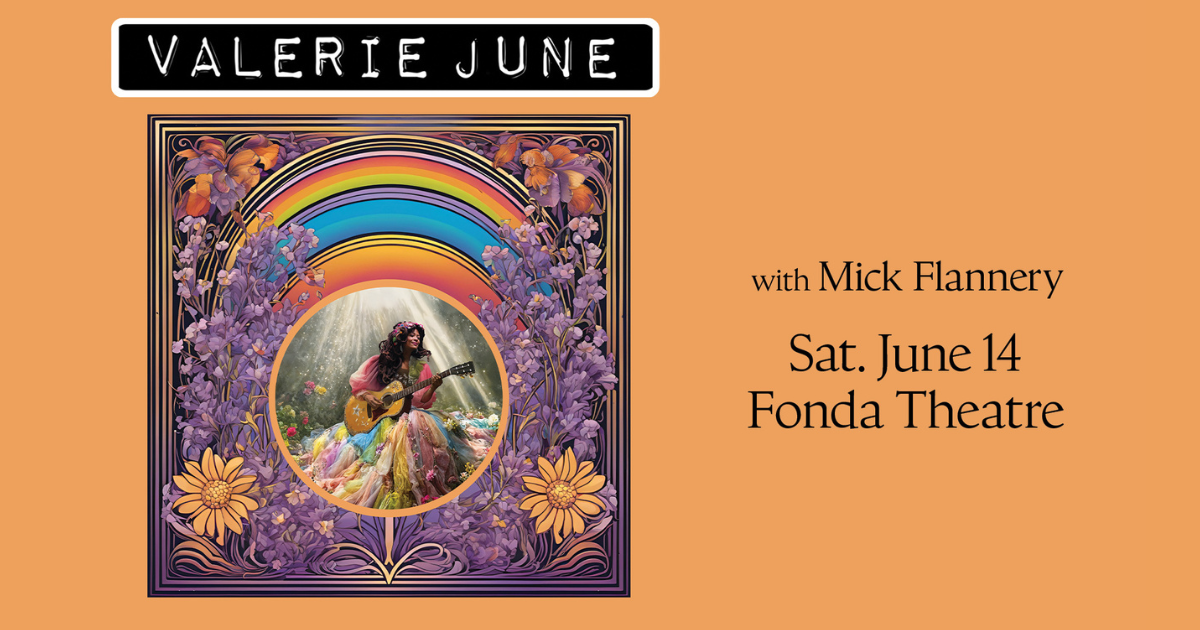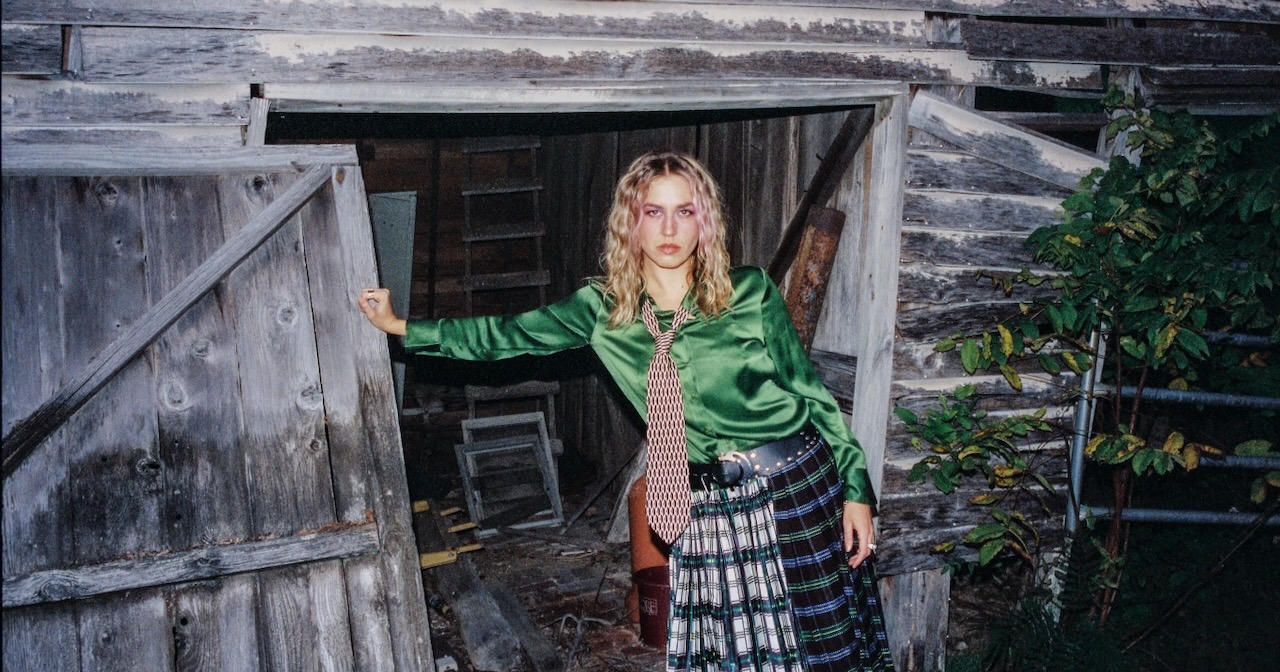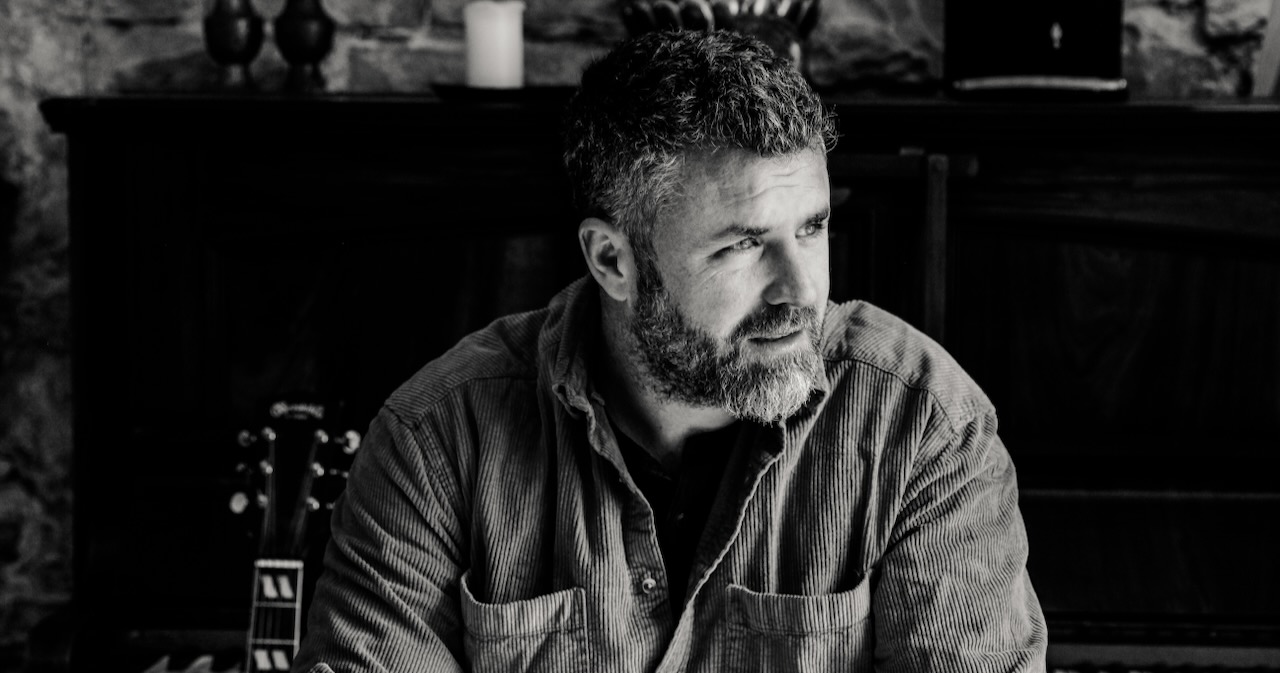Tag: Mick Flannery
MIXTAPE: Melanie MacLaren’s Love & Loss Playlist
Welcome to my Mixtape of loss and love! I hope you don’t need it right now, but if you do, it’s here to bring you a little comfort. When I was making it, I started out trying to make the most devastating playlist I could make, but then halfway through I decided to make something I’d actually enjoy listening to. Something that mimics the way we process loss and love– yes, there’s a lot of time spent in really dark places, but there’s also so much humor in the face of everything and a lot of reluctant joy, showing its light despite our best efforts to draw the curtains and hide.
That dialogue between loss and joy is at the heart of my EP, Bloodlust, which just came out on October 24. I wrote this project coming out of a period of life that was marred by grief, death, and illness, so naturally I had a lot of heavy stuff on my mind, but I felt this overwhelming need to write some of the most upbeat and energetic songs I’ve ever written.
Sometimes it helps to grieve and sulk and sometimes you want to just roll down the windows and feel your pain casually, communally, and maybe even with the last laugh. I think there’s room on this Mixtape to do both. – Melanie MacLaren
“Wayside/Back in Time” – Gillian Welch
We like to think of a loss as these finite events, but sometimes it’s a long, steady process, the passing of time and dissolution of relationships, a slow decline of health. Loss can sometimes simply be the progression of time, and Gillian Welch’s writing is so timeless, too, that it strengthens that feeling – she could be singing from any time about any time, as long as it’s gone.
“Change” – Big Thief
Thinking of loss as simply “change” is really difficult, but at its core that’s what it is.
“Flirted With You All My Life” – Vic Chesnutt
This song is wild. I remember the first time someone played this for me on a road trip, I was smiling thinking, “Oh man, he really likes me,” and then that guitar comes in and the lyrics change tone completely and you realize the whole song is about death. It’s a funny phenomenon. You can feel the sky darkening at that moment. But then you listen to the song again with all that in mind and you still feel happy in the first half of the song. I think that’s part of the beauty of it too– knowing the ending and still being receptive to joy.
“beachball” – Dan Reeder
This is a 90-second song about a beachball that makes me bawl my eyes out. I love Dan Reeder.
“Buffalo” – Hurray for the Riff Raff
I have a soft spot for songs that talk about animals (I guess that’s why I wrote a song about Laika for my EP). I think we can talk about them in a way that we’re afraid to talk about ourselves. Their fear is our fear, but it’s hard for us to think of it that way. Asking if the love we share with each other as humans will last forever or if it will go extinct the way that some animals have, at our hands, feels really bold.
“Bloodlust” – Melanie MacLaren
This is the title track off my new EP. This whole project is me trying to make peace with the constant cycles of loss and love we all inevitably experience in our lives. They’re natural like the seasons, but they still feel so overwhelming and unnatural. It was also my attempt to experience moments of joy while not shutting out my grief and anger.
“Random Rules” – Silver Jews
Love and loss are so incredibly random that it would be funny if it didn’t matter so much to us. I always laugh a little at the first line and feel really nonchalant in a dumb way. It sounds like wearing sunglasses inside to me. But then, by the second verse, I’m fully feeling my feelings and replaying every little thing that’s gone wrong between me and every person I’ve ever cared about.
“New Partner” – Palace Music
I like to listen to this song when I’m driving alone and see who I picture in the passenger seat beside me. It changes a lot. That’s probably a good thing.
“I’ve Got a Darkness” – Mick Flannery
Mick Flannery writes the best songs. This song is such a devastating portrait of generational pain and an ode to the fact that we can feel the effects of loss and love that we’ve never experienced in our own lifetime. We carry so much with us that we’re not even aware of.
“Lake Charles” – Lucinda Williams
I love how the verses are just memories, snapshots of life, and all questions and talk of death is reserved for the chorus. It’s such a beautiful homage that way, letting someone still be alive in the song and just describing things as they were, but then still asking those bigger questions because you can’t help but ask when you’ve lost someone you love. You just hope they’re ok.
“The Arrangements” – Willi Carlisle
I love the line, “It’s still sad when bad love dies.” Amazing album with lots of songs about animals.
“Whatever Happened to Us” – Loudon Wainwright III
I love how blunt this song is and how it relies on humor in the face of loss. I heard it for the first time this summer, after I had recorded my song “Get It Back.” I immediately resonated with its matter-of-fact nature. I also love the wordplay in it; I think having fun with language is a way we as humans maintain a little bit of control of the narrative of things we don’t really have much actual agency over.
“Donut Seam” – Adrianne Lenker
There’s so much off this album that could be on this playlist. I almost went with “Sadness as a Gift,” but I really loved the way this song intertwines a dying love with the feeling that the world is dying. Even if that isn’t literal, it often feels literal. The harmony on “what it means to walk that line” makes me feel human.
“Days of the Years” – The Felice Brothers
I love how loss is naturally integrated with the mundane and the beautiful: “These are the days, of the years, of my life.” What else is there?
“Don’t Let Us Get Sick” Solo Acoustic – Warren Zevon
The simplicity of this song is so overwhelming, especially from a writer who can obviously complicate things lyrically and musically when he wants to. He just stays in this sort of The Muppet Christmas Carol arena (compliment!) and it’s so effective, because what he’s asking for is so simple. It sounds like a child’s prayer.
Photo Credit: Blaire Beamer
MIXTAPE: Mick Flannery on Melody and Meaning
Most songs stay in one musical scale or “key.” In this key there are 6 chords which are widely used. The 1 chord is the root chord, usually used to end the song and give a definite feeling.
Chords 2 and 3 are sad sounding minor chords in most cases. Chord 4 and 5 often give a feel of expectation to the ear, willing the melody back to the root (1) chord. The 6 chord is a relative minor to the root, often sad sounding.
In my opinion, some of the most successful moments of empathy occur when the feel of the chords and melody marry in harmony with the meaning of the lyrics. The lyrics themselves can also provide a musical feeling, the choice of vowels can marry to emotions, the consonants selected can give a nod to drum-like rhythm. I will try to give some examples here. – Mick Flannery
Bob Dylan – “Changing of the Guards”
Dylan uses a mixture of metaphors for social struggle and revolution in this epic song. The frequent use of the root chord and its relative minor at the end of phrases helps to add weight to the lines. This gives the song a definite feel, as he is ending on these strong chords as opposed to chords 4 or 5, which suggest a question unanswered.
Bob Dylan – “Baby, Stop Crying”
An example of melody marrying to feeling. The line, “Please stop crying,” is expressed with a longing in the melody concurrent with the meaning of the words. Also, “You know, I know, the sun will always shine” has a comforting feel in the melody with the word “shine” being on the root chord, helping it to sound definite and consoling.
Adele – “Someone Like You”
The top of the chorus in this song works very well between meaning and melody. The word “nevermind” is dismissed in quick order, as it would be in common parlance, giving a natural, talkative feel. The internal rhyme of “mind” and “find” gives a rhythmical feel to the line as a whole, allowing the listener to imagine a snare sound on the “I” vowels. The use of this internal rhyme makes the song universally easy on the ear, even to non-English speakers.
Lana Del Rey – “Video Games”
“It’s you, it’s you, it’s all for you, everything I do…” This whole line is placed on a 5 chord, which gives a feeling of something needing to be resolved, so the listener doesn’t know if the narrator is placing her trust in the right place.
“I tell you all the time” lands on a 4 chord – again, an expectant feel – making the listener wait for the line, “Heaven is a place on earth with you” landing on the 1 chord. This gives a definite note to the feeling, but narratively the listener is still left unsure if the feeling is requited, owing to the amount of time spent on uncertain footing in the melody.
Arctic Monkeys – “Fluorescent Adolescent”
The quick, rap-like nature of the verses are aided by the use of short vowels (“I” “E”) and short-sounding consonants like “T” and “K.” The line, “Flicking through your little book of sex tips,” almost sounds like a rhythm played on a high-hat, because of the choice of words.
Tom Waits – “Martha”
The chorus here leans on long vowels to intone nostalgia, “Those were days of roses, poetry and prose and… no tomorrow’s packed away our sorrows and we saved them for a rainy day.” The choice of words echoes a longing and almost sounds like a groan of regretful realization, as per the theme of the song.
Blaze Foley – “Clay Pigeons”
In this soft and low intoned song, Foley utilizes “T” and “K” with short vowels to inject a spot of rhythm in the line, “Gonna get a ticket to ride.” The line, “Start talking again when I know what to say,” lands on a 4 chord which has an unresolved feel, marrying well to the meaning of the line, wherein we hear that the narrator has not yet reached a certain point.
Anna Tivel – “Riverside Hotel”
“Someday I’m gonna laugh about it, looking down from heaven’s golden plain,” moves from the 4 to the 1 and then 4 to 5. “Someday” marries nicely with the unresolved feel of the 4 chord. Ending on the 5 leaves the listener waiting for a resolve, which comes on the root chord in the line: “But for now I’ve found some piece down by the water, just to watch a building rise up in the rain.” This line uses a root chord on “for now” which gives a reassuring, steady feel concurrent with the sentiment.
Anna Tivel – “The Question”
The title of this song in itself sets the listener up for an unresolved feeling. The use of long “A” sounds (razor, saved, saving, hallelujah waiting, raise, etc.) leading up to the line, “A prayer that never mentioned,” works very well, as it sounds like an expectant chant. On the last words, “The glory of the question and the answer and the same,” the word “glory” lands strongly on the sad sounding relative minor chord, while the line ends on an expectant 5 chord. This gives a juxtaposition, the narrator has seemingly answered a question, but also left it open to further thought because of the use of this uncertain chord underneath.
Eminem – “Lose Yourself”
This song is a masterclass in internal rhyme. The lines of the verses are so phonetically intertwined that they begin to sound like the components of a drum kit. This is easy for the human ear to digest even in an unknown language. The fact that the lines make perfect sense narratively is the “icing” achievement.
Tom Waits – “Hold On”
Long vowels in the chorus marry to the meaning of patience and perseverance. In meditation, long vowels are used in calming chants, which is echoed here in the repetition of “Hold on.” This feel is broken up slightly by the words “take my hand” where Waits accentuates the “T” and “K” to give a burst of drum-like rhythm.
Photo Credit: Susie Conroy


